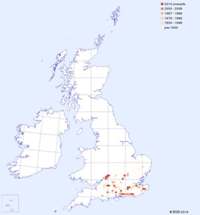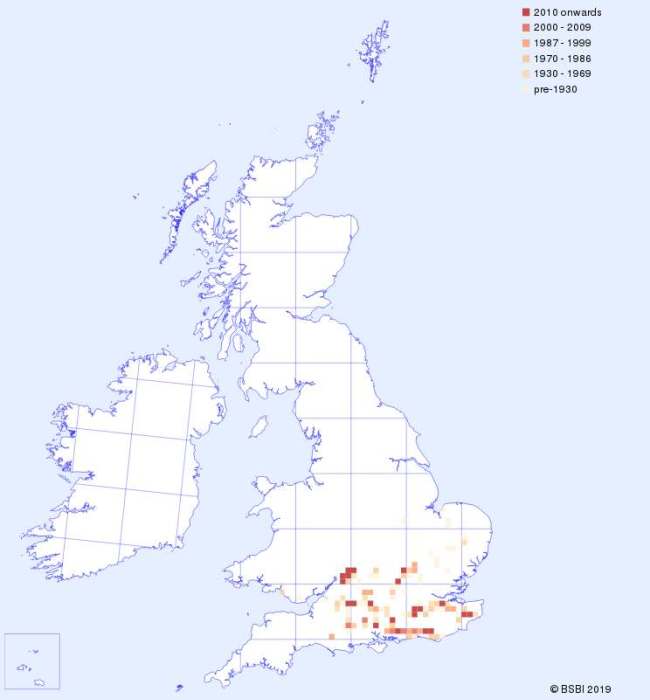Classified as Nationally Scarce, this orchid is now confined to a few sites in southern England. Its diminutive size and its greenish colour, which blends perfectly with the surrounding vegetation, means that it is frequently overlooked despite appearing in large numbers in favoured spots. Musk Orchid grows exclusively on short grass on limestone, and the extensive destruction and subsequent loss of this type of habitat means that it has disappeared from around 70% of its traditional range. Musk Orchid flowers from early June to early July, but its appearance is erratic and the number of plants are subject to fluctuation from year to year. The range of Herminium monorchis on mainland Europe is mainly northern and eastern, and it is widespread in Scandinavia and Finland and in the Baltic States; there is, however, an isolated population in central Spain.
| Distribution Map | Key Features | |
 |
Records for the Musk Orchid from BSBI are shown on the map with most recent in front. (Hover the mouse over the small map to expand it.) |
Plant: 2 to 30cm in height; stem dark green or yellow-green and distinctly ridged at the tip. |
Image Gallery for Musk Orchid Herminium monorchis
| Pollination | Taxonomy & Hybrids |
The flowers are pollinated by a variety of small insects including gnats and beetles. Opinions differ on whether or not self-pollination takes place. Musk Orchid spreads vegetatively, and this accounts for the plant's ability to form large colonies. |
The specific name monorchis means 'single testicle' and refers to the single tuber from which the flower stems emerge. |
Articles about Musk Orchid in JHOS
